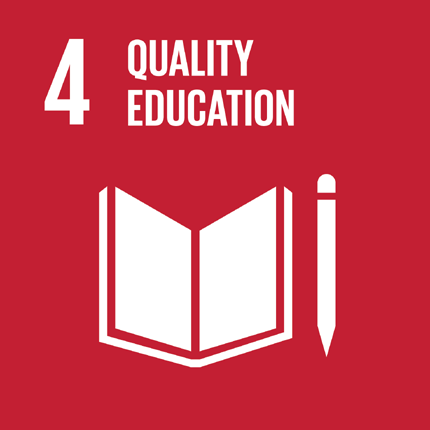sdg4
SUSTAINABLE DEVELOPMENT GOAL 4
Ensure inclusive and equitable quality education and promote lifelong learning opportunities for all
Progress of goal 4
- Despite progress, the world failed to meet the Millennium Development Goal of achieving universal primary education by 2015. In 2013, the latest year for which data are available, 59 million children of primary-school age were out of school. Estimates show that, among those 59 million children, 1 in 5 of those children had dropped out and recent trends suggest that 2 in 5 of out-of-school children will never set foot in a classroom. The Sustainable Development Goals clearly recognize that this gap must be closed, even as the international community more explicitly addresses the challenges of quality and equity.
- Measuring learning achievement, starting in the early grades, will help to identify where schools are failing to meet their commitments to children and to formulate appropriate remedial action. For example, data for 2013 from 15 Latin American countries show that in six countries, fewer than 50 per cent of third graders had a minimum level of proficiency in mathematics; in three countries, fewer than half were proficient in reading.
- At the end of primary school, children should be able to read and write and to understand and use basic concepts in mathematics. However, in 2014, between 40 per cent and 90 per cent of children failed to achieve even minimum levels of proficiency in reading, in 10 African countries, and in nine of those countries, between 40 per cent and 90 per cent of children failed to achieve minimum levels of proficiency in mathematics.
- The end of lower secondary education often coincides with the end of compulsory education. By this stage, young people should be able to master subject-related knowledge and skills and possess personal and social skills. Data from 38 countries in the developed regions show that, in the majority of those countries, at least 75 per cent of young people achieved at least a minimum proficiency in reading and/or mathematics; the same was true for only 5 out of 22 countries, in developing regions, for which data were available.
- Completion rates for both primary and lower secondary education has been rising steadily since 2000. Completion rates for primary education in both developed and developing regions exceeded 90 per cent in 2013. At the lower secondary level, the gap between developed and developing regions has narrowed substantially, but still stood at nearly 20 percentage points in 2013 (91 per cent for developed regions and 72 per cent for developing regions).
- Quality early education provides children with basic cognitive and language skills and fosters emotional development. In the majority of the 58 countries with available data for the period 2009-2015, more than half of children between the ages of 3 and 4 were developmentally on track in at least three of the following domains: literacy, numeracy, physical development, social-emotional development and learning.
- Goal 4 strongly supports the reduction of persistent disparities. Worldwide, in 2013, two thirds of the 757 million adults (aged 15 and over) who were unable to read and write were women. Globally, in 2013, 1 in 10 girls were out of school, compared to 1 in 12 boys. Children from the poorest 20 per cent of households are nearly four times more likely to be out of school than their richest peers. Out-of-school rates are also higher in rural areas and among children from households headed by someone with less than a primary education.
- To fulfil the promise of universal primary and secondary education, new primary school teachers are needed, with current estimates showing a need for nearly 26 million of them by 2030. Africa faces the greatest challenges in this regard, with nearly 7 in 10 countries experiencing acute shortages of trained primary school teachers. In 2013, only 71 per cent of teachers in sub-Saharan Africa and 84 per cent in Northern Africa were trained in accordance with national standards.
- Official development assistance for educational scholarships amounted to around $1.1 billion annually from 2011 to 2013. It totalled $1.2 billion in 2014, with Australia, France and Japan being the largest contributors.
Source: United Nations, Department of Economic and Social Affairs, SUSTAINABLE DEVELOPMENT KNOWLEDGE PLATFORM
The National Indicators for Sustainable Development Goal 4 are:
- Participation rate of youth and adults in formal and non-formal education and training in the previous 12 months, by sex (%)
- Proportion of youth and adults with information and communications technology (ICT) skills, by type of skill (%)
- Early leavers from education and training by sex (%)
- Tertiary educational attainment by sex (%)
- Participation in early childhood education by sex
- Employment rates of recent graduates by sex (%)
- Adult participation in learning by sex (%)
- Young people neither in employment nor in education and training by sex (%)
All available data in .xls file:
- Quality education
Last Updated: 7/5/2025
EU SDG indicator set
To measure SDG achievement in an EU context, an EU SDG indicator set was developed under the leadership of Eurostat. The purpose of this set, which is structured along the 17 global Sustainable Development Goals, is to monitor progress towards the SDGs at the European level.
- For the complete set of indicators available in the Eurostat database, click here.
- To compare Greece’s progress on specific indicators for each Sustainable Development Goal, click here [data visualisation].

